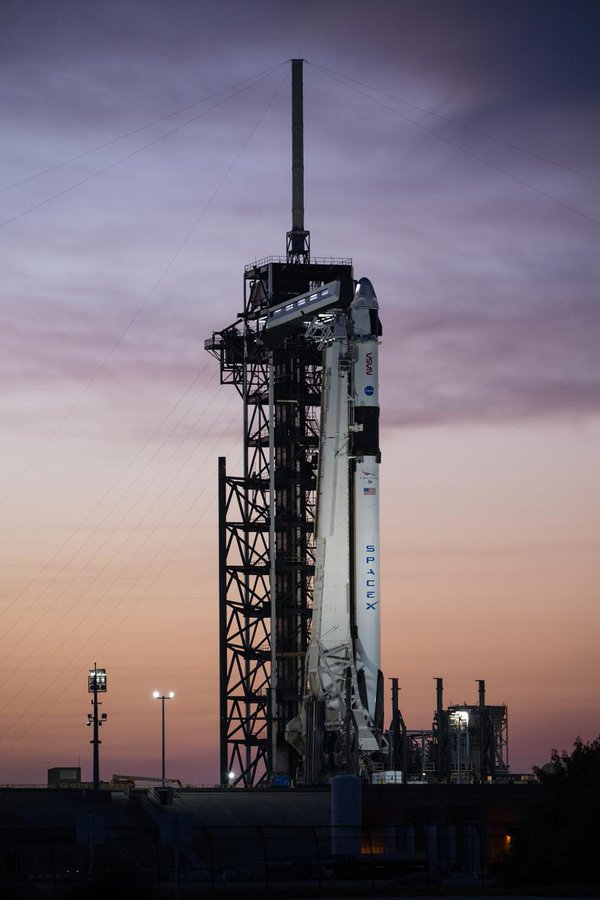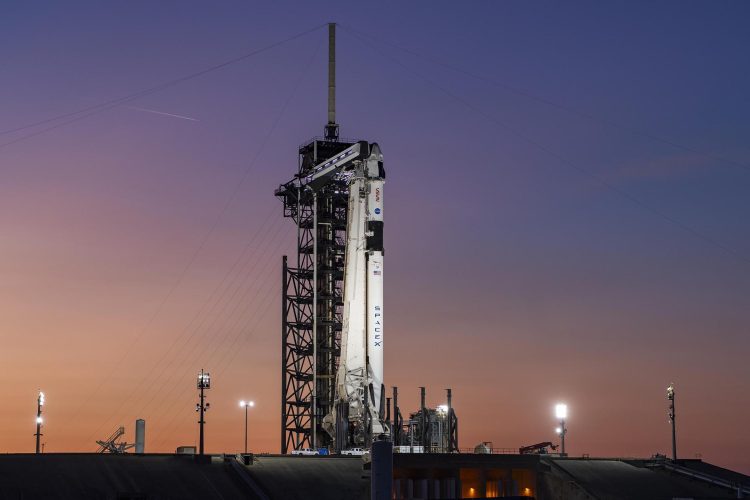Introduction
The upcoming launch of NASA’s SpaceX Crew-9 mission represents a significant milestone in the evolution of human spaceflight, reflecting the successful collaboration between government space agencies and private aerospace innovators. This mission is part of NASA’s Commercial Crew Program, designed to ensure a robust and reliable means of transporting astronauts to and from the International Space Station (ISS). This detailed guide will explore the Crew-9 mission’s objectives, the spacecraft and launch vehicle involved, the composition of the crew, the media experience, and the broader implications for space exploration.
Mission Overview
The Crew-9 mission is a landmark event in space exploration, building on the achievements of previous missions and paving the way for future advancements. Here’s a deep dive into what makes this mission exceptional.
1. Mission Objectives
The Crew-9 mission is designed with several key objectives:
- Transporting Crew to the ISS: The primary goal of Crew-9 is to transport astronauts to the ISS. This mission continues the tradition of maintaining a continuous human presence aboard the space station, which is vital for ongoing scientific research and international cooperation.
- Conducting Scientific Research: Once aboard the ISS, the Crew-9 astronauts will engage in a diverse range of scientific experiments. These experiments will span various disciplines, including biology, physical sciences, and materials science, contributing to our understanding of space and its effects on the human body.
- Advancing International Partnerships: The ISS is a collaborative effort involving multiple space agencies, including NASA, ESA, JAXA, and Roscosmos. The Crew-9 mission continues this international partnership, reinforcing the global commitment to space exploration and scientific discovery.
2. The Spacecraft and Launch Vehicle
The Crew-9 mission will utilize SpaceX’s advanced spacecraft and launch vehicle, both of which play crucial roles in ensuring the mission’s success.
Crew Dragon Spacecraft
The Crew Dragon, also known as Dragon 2, is the next-generation spacecraft developed by SpaceX to transport astronauts to the ISS. Key features include:
- Advanced Safety Systems: The Crew Dragon is equipped with state-of-the-art safety features, including an advanced launch escape system designed to protect the crew in the event of an emergency during launch.
- Crew Comfort: The spacecraft’s interior is designed with crew comfort in mind, featuring ergonomic seats, large windows for viewing the Earth, and modern touch-screen controls.
- Autonomous Capabilities: The Crew Dragon is equipped with sophisticated avionics and autonomous docking capabilities, allowing it to dock with the ISS with minimal manual intervention from the crew.
Falcon 9 Rocket
The Falcon 9 rocket is the launch vehicle that will propel the Crew Dragon spacecraft into orbit. Notable aspects of the Falcon 9 include:
- Reusable Design: One of the key innovations of the Falcon 9 is its reusable design. The first stage of the rocket can land back on Earth and be refurbished for future launches, significantly reducing the cost of space access.
- Performance and Reliability: The Falcon 9 has a proven track record of reliable launches, with numerous successful missions carrying both crewed and uncrewed spacecraft to orbit.

The Crew-9 Astronauts
The Crew-9 mission will be carried out by a team of highly trained astronauts, each bringing unique expertise and experience to the mission. Here’s a detailed look at the crew members:
1. Mission Commander
The mission commander is responsible for overseeing all aspects of the mission, including spacecraft operations, crew safety, and mission objectives. The commander’s role is crucial for ensuring that the mission proceeds smoothly and successfully.
2. Pilot
The pilot assists the commander in managing the spacecraft and performs essential tasks related to navigation and mission execution. The pilot’s training and skills are vital for the spacecraft’s operation and the success of the mission.
3. Mission Specialists
Mission specialists are astronauts with specialized knowledge in various fields relevant to the mission. Their responsibilities include conducting scientific experiments, operating spacecraft systems, and performing specific tasks related to their expertise.
Media Coverage and Public Engagement
The launch of Crew-9 presents a unique opportunity for media and public engagement. Here’s how the experience will unfold:
1. Media Invitation and Access
NASA and SpaceX have extended invitations to media representatives to cover the Crew-9 launch. The media coverage will include:
- Pre-Launch Briefings: Media representatives will receive briefings from NASA and SpaceX officials, providing insights into the mission objectives, spacecraft details, and launch preparations.
- Launch Day Coverage: On launch day, media will have access to live coverage of the countdown, ignition, and liftoff. This will include real-time updates and commentary on the mission’s progress.
- Post-Launch Activities: Following the launch, media representatives will have the opportunity to interview key personnel, including astronauts and mission experts. They will also receive updates on the spacecraft’s journey and docking with the ISS.
2. Behind-the-Scenes Access
Media coverage will also include behind-the-scenes access to:
- Launch Facilities: Media will be granted access to SpaceX’s launch facilities, including the launch pad and control centers. This access provides a comprehensive view of the preparations and operations leading up to the launch.
- NASA’s Mission Control: Media will also have the opportunity to observe NASA’s mission control operations, gaining insights into the coordination and management of the launch and mission.
3. Public Engagement
For the public, NASA and SpaceX will provide various ways to engage with the mission:
- Live Streaming: The launch will be streamed live on NASA’s and SpaceX’s official websites, allowing people around the world to witness the event in real-time.
- Social Media Updates: Both NASA and SpaceX will provide regular updates on social media platforms, including Twitter, Facebook, and Instagram. These updates will include photos, videos, and commentary on the mission’s progress.
- Educational Resources: NASA and SpaceX will offer educational resources and materials to help the public understand the mission’s significance and the science behind space exploration.
Scientific and Technological Impact
The Crew-9 mission has far-reaching implications for science and technology:
1. Advancing Space Research
The scientific research conducted during the Crew-9 mission will contribute to a deeper understanding of various scientific fields:
- Biological Research: Experiments on the ISS will explore the effects of microgravity on biological systems, including human health, plant growth, and microbial behavior. This research is essential for understanding how long-duration spaceflight affects living organisms.
- Materials Science: Studies on the behavior of materials in space, including their response to radiation and microgravity, will inform the development of new materials and technologies for space exploration and other applications.
- Fundamental Physics: Investigations into fundamental physical phenomena, such as fluid dynamics and combustion, conducted in the unique environment of space, will provide valuable insights into the laws of physics.
2. Enhancing Spaceflight Technology
The Crew-9 mission demonstrates the effectiveness of advanced spaceflight technologies:
- Spacecraft Reliability: The performance of the Crew Dragon spacecraft under real mission conditions provides valuable data on its reliability and safety, supporting the development of future crewed missions and spacecraft.
- Reusability: The successful reuse of the Falcon 9 rocket’s first stage highlights the benefits of reusable space transportation, contributing to cost savings and increased access to space.
- Commercial Spaceflight: The collaboration between NASA and SpaceX underscores the advantages of involving commercial companies in space exploration. The success of Crew-9 reinforces the value of public-private partnerships in advancing space technology and exploration.
Future Missions and Developments
The Crew-9 mission is part of a broader agenda for human space exploration and space station operations:
1. Upcoming Crew Missions
Following Crew-9, NASA and SpaceX will continue to conduct crewed missions to the ISS, including:
- Crew-10 and Subsequent Missions: Future crewed missions will build on the success of Crew-9, with new astronauts, research objectives, and technological advancements. These missions will support ongoing operations on the ISS and contribute to long-term space exploration goals.
- Lunar and Mars Missions: The experience gained from Crew-9 and other ISS missions will inform future missions to the Moon, Mars, and beyond. The insights from space station operations will contribute to planning and executing deep space missions.
2. International Collaboration
The ISS remains a symbol of international collaboration in space exploration. Future missions will continue to involve international partners, including:
- International Space Agencies: Collaborations with space agencies from other countries will enhance the scope of research and technology development. Joint missions and research projects will strengthen global partnerships in space exploration.
- Global Research: The ISS serves as a platform for international scientific research, with contributions from scientists and researchers around the world. This collaborative approach drives innovation and fosters global cooperation.
Conclusion
The launch of NASA’s SpaceX Crew-9 mission is a momentous event in the ongoing journey of human space exploration. It highlights the successful collaboration between NASA and SpaceX, underscores the advancements in space technology, and emphasizes the importance of international cooperation in space.
Media coverage and public engagement will play a crucial role in bringing the excitement of the Crew-9 launch to a global audience. Through live streaming, social media updates, and educational resources, the public will have the opportunity to experience the mission’s significance and witness the achievements of modern spaceflight.


















































Discussion about this post